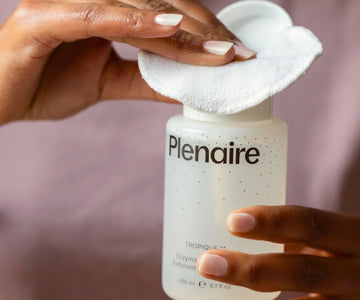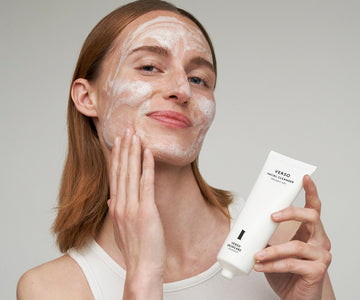
With sun all year around in the GCC, a proper sun care routine is essential even if you only spend a few minutes outdoors. This guide delves into essential sunscreen knowledge, including the key differences between mineral and chemical SPF, and the variety of application forms available.
Understanding Mineral vs. Chemical SPF
Sunscreen falls into two main categories: mineral (physical) and chemical, each with unique protective mechanisms.
- Mineral Sunscreens: These contain active mineral ingredients such as zinc oxide or titanium dioxide. They work by sitting on top of the skin to physically block and reflect UV rays. Ideal for sensitive skin, they are effective immediately upon application and are less likely to irritate or cause allergic reactions.
- Chemical Sunscreens: Formulated with organic compounds like oxybenzone, avobenzone, and octocrylene, chemical sunscreens absorb UV radiation through their chemical bonds, converting it into heat and dissipating it from the skin. They tend to be lighter and more suitable for daily wear, although they can sometimes irritate sensitive skin.
Water-Resistant Sunscreen
If you’re into water sports or find yourself sweating under the sun, water-resistant sunscreens are crucial. They are specifically tested to maintain their SPF protection for 40 or 80 minutes of water exposure. Reapplying after swimming or heavy sweating is essential to maintain effectiveness.
Reef-Safe Sunscreen
"Reef-safe" sunscreens are typically mineral-based and free from oxybenzone and octinoxate, which have been found to harm coral reefs. Opting for reef-safe products helps protect marine ecosystems while you enjoy time on the beach.
Types of sunscreen formulations
Sunscreen comes in various formulations, each offering different benefits depending on your lifestyle and skin type:
- Lotions: The most common form of sunscreen, lotions are easy to apply over large areas and ideal for dry skin due to their moisturizing properties.
- Sprays: Convenient for hard-to-reach areas and quick reapplications, sprays are easy for travelling and taking your SPF on the go.
- Sticks: Perfect for targeted application on areas like the face and around the eyes. Sunscreen sticks are portable and less messy.
- Mousses: A newer form, offering a lightweight feel and easier application without the heaviness of creams.
What SPF number should you choose?
The SPF number indicates the level of protection a sunscreen offers against UVB rays—the type of radiation that causes sunburn and contributes to skin cancer. Specifically, SPF 30 blocks about 97% of UVB rays, while SPF 50 blocks about 98%. The higher the SPF, the more protection it offers, but the increase becomes less significant as the numbers get higher. SPF 30 is generally good for everyday use but if you are spending extended periods outdoors and are fair skinned, SPF 50 could provide some added protection.
How much SPF should you apply?
Regardless of the type of sunscreen you choose, proper application is key. Apply a generous amount, approximately one ounce, for full body coverage, and 2 finger lengths for the full face. Reapply every two hours or immediately after swimming or sweating making sure to cover all exposed skin thoroughly.
Selecting the right sunscreen involves considering your skin type, environmental impact, and the activities you’ll be engaging in. Whether you opt for mineral or chemical, water-resistant, or a specific formulation, the right choice helps ensure effective protection.
Understanding the different types of sunscreens and their specific benefits can greatly enhance how you protect your skin from the sun. With the right knowledge, you can choose a sunscreen that not only safeguards your skin but also fits seamlessly with your lifestyle and skincare preferences.






















